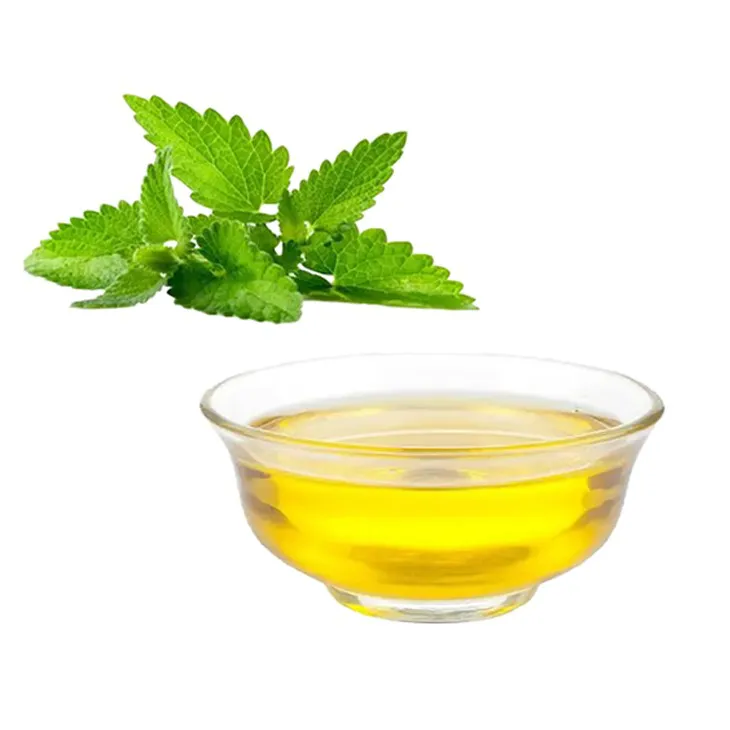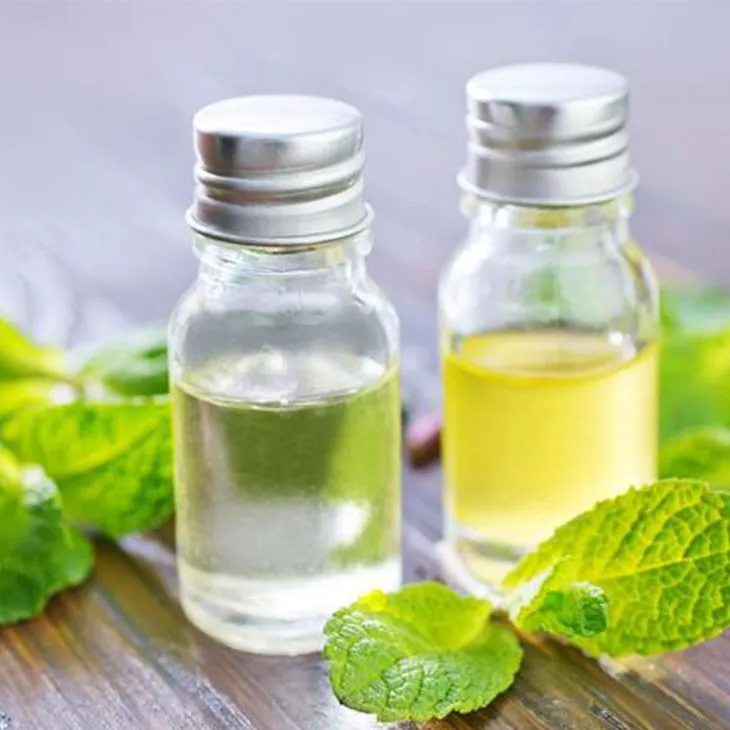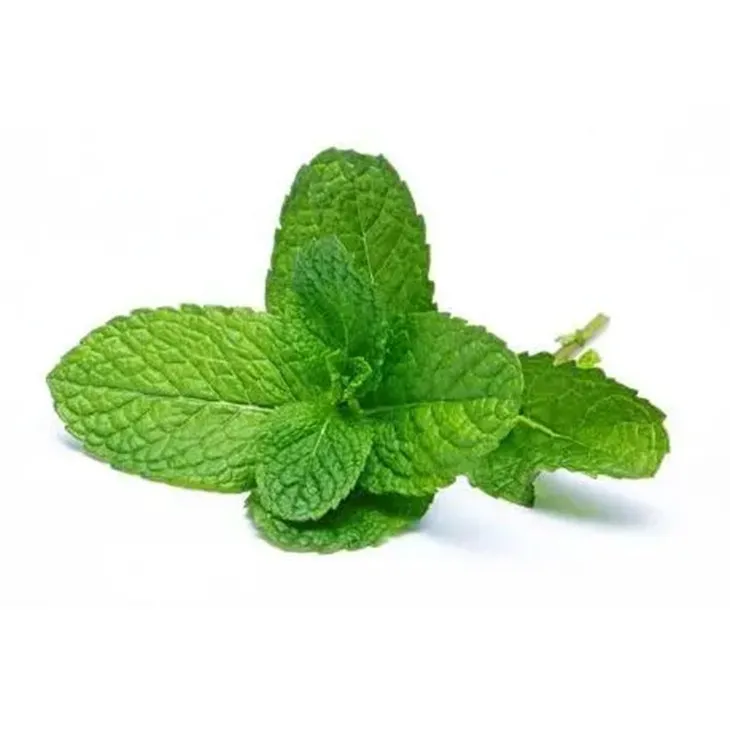- 0086-571-85302990
- sales@greenskybio.com
Peppermint Oil Extraction Technology and Production Process
2024-11-29

1. Introduction
Peppermint Oil has a wide range of applications in various industries. Its refreshing aroma and diverse properties make it a valuable ingredient in the food, cosmetics, and pharmaceutical industries. For example, in the food industry, it is used as a flavoring agent in candies, chewing gums, and beverages. In cosmetics, it is added to lotions, shampoos, and creams for its cooling and soothing effects. In pharmaceuticals, it may be used for its analgesic and anti - inflammatory properties. Therefore, understanding the extraction technology and production process of Peppermint Oil is crucial for ensuring its quality and availability.

2. Extraction Methods
2.1 Steam Distillation
Steam distillation is one of the most common methods for extracting Peppermint Oil.
- Principle: This method is based on the fact that when steam is passed through the peppermint plant material, the volatile components, including the oil, vaporize. The steam - oil mixture is then condensed, and the oil is separated from the water. The principle behind this is that the boiling point of the oil - water mixture is lower than the boiling point of either the water or the oil alone. This allows for the extraction of the oil at a temperature lower than its normal boiling point, which helps to preserve its chemical composition.
- Procedure:
- The first step is to prepare the raw material. The peppermint plants are harvested at the appropriate time, usually when they are in full bloom. The leaves and stems are then carefully selected and cleaned to remove any dirt, debris, or damaged parts.
- The prepared plant material is placed in a distillation apparatus. Steam is then introduced into the apparatus. The steam passes through the plant material, carrying the volatile oil components with it.
- The steam - oil mixture is then condensed in a condenser. This can be a water - cooled condenser or some other type of cooling device. As the mixture cools, it turns back into a liquid state.
- Finally, the condensed mixture is collected in a separator. Since oil and water do not mix well, they can be separated relatively easily. The peppermint oil is then collected and further processed if necessary.
- Advantages:
- It is a relatively simple and cost - effective method. The equipment required for steam distillation is not overly complex and can be found in many essential oil production facilities.
- It is a well - established method, and there is a great deal of knowledge and experience available regarding its operation and optimization.
- It produces a relatively pure form of peppermint oil, as many of the non - volatile impurities are left behind in the plant material during the distillation process.
- Disadvantages:
- The extraction process can be time - consuming, especially if large quantities of plant material are being processed.
- Some of the more delicate or heat - sensitive components of the peppermint oil may be degraded during the steam distillation process due to the relatively high temperatures involved.
2.2 Solvent Extraction
Solvent extraction is another method used for peppermint oil extraction.
- Principle: In solvent extraction, a suitable solvent is used to dissolve the peppermint oil from the plant material. The solvent is chosen based on its ability to selectively dissolve the oil while leaving behind the other plant components. Commonly used solvents include hexane, ethanol, and ethyl acetate. The principle is based on the solubility differences between the oil and the other components in the chosen solvent.
- Procedure:
- Raw material preparation is similar to that in steam distillation. The peppermint plants are harvested, and the leaves and stems are cleaned.
- The plant material is then soaked in the chosen solvent. The solvent penetrates the plant cells and dissolves the peppermint oil. This process may be carried out at room temperature or with gentle heating to increase the solubility and extraction rate.
- After a sufficient extraction time, the solvent - oil mixture is separated from the plant residue. This can be done through filtration or centrifugation.
- The next step is to remove the solvent from the oil. This is typically done through evaporation under reduced pressure. The solvent is evaporated, leaving behind the peppermint oil.
- Advantages:
- It can be more efficient than steam distillation in terms of extracting a higher yield of peppermint oil, especially for some of the more difficult - to - extract components.
- It can be carried out at lower temperatures compared to steam distillation, which is beneficial for heat - sensitive components of the oil.
- Disadvantages:
- The use of solvents introduces the risk of solvent residues remaining in the final product. These residues can be harmful if not completely removed and may limit the use of the peppermint oil in certain applications, especially in the food and pharmaceutical industries.
- The process requires careful handling of solvents due to their flammability and potential toxicity. This adds to the complexity and safety requirements of the production process.
2.3 Supercritical Fluid Extraction
Supercritical fluid extraction is a more advanced method for peppermint oil extraction.
- Principle: A supercritical fluid is used as the extraction medium. A supercritical fluid is a substance that is above its critical temperature and critical pressure. In the case of peppermint oil extraction, carbon dioxide is often the supercritical fluid of choice. Supercritical carbon dioxide has properties that are intermediate between a gas and a liquid. It has a high diffusivity like a gas, allowing it to penetrate the plant material easily, and a high solvating power like a liquid, enabling it to dissolve the peppermint oil effectively.
- Procedure:
- The peppermint plant material is placed in an extraction vessel. Carbon dioxide is then pressurized and heated to its supercritical state and introduced into the vessel.
- The supercritical carbon dioxide extracts the peppermint oil from the plant material. The extraction process is carefully controlled in terms of pressure, temperature, and extraction time to optimize the yield and quality of the oil.
- After the extraction, the supercritical carbon dioxide - oil mixture is passed through a separator. By reducing the pressure, the carbon dioxide reverts to a gaseous state, leaving behind the peppermint oil.
- Advantages:
- It is a very clean extraction method, as carbon dioxide is non - toxic, non - flammable, and leaves no harmful residues in the final product. This makes it highly suitable for applications in the food and pharmaceutical industries.
- It can be highly selective, allowing for the extraction of specific components of the peppermint oil while leaving behind others. This can be controlled by adjusting the extraction conditions such as pressure and temperature.
- The extraction process is relatively fast compared to some of the other methods, and it can often result in a high - quality product with a good yield.
- Disadvantages:
- The equipment required for supercritical fluid extraction is relatively expensive, which can be a significant barrier to entry for small - scale producers.
- The operation of the supercritical fluid extraction process requires a high level of technical expertise and careful control of the extraction conditions to ensure consistent results.

3. Production Process
3.1 Raw Material Selection
Raw material selection is a crucial step in the production of peppermint oil.
- Variety: Different varieties of peppermint plants can have different oil compositions and yields. For example, Mentha piperita is a commonly used variety for peppermint oil production. It is important to select the appropriate variety based on the desired characteristics of the final oil product.
- Quality: The quality of the peppermint plants also plays a significant role. Plants should be healthy, free from diseases and pests, and grown in suitable environmental conditions. The soil quality, sunlight exposure, and water availability can all affect the quality of the plants and, ultimately, the quality of the oil.
- Harvest Time: The time of harvest is critical. Peppermint plants are typically harvested when they are in full bloom or just before. At this stage, the oil content in the plants is at its highest. Harvesting too early or too late can result in a lower yield of oil.
3.2 Pretreatment
Pretreatment of the peppermint plants is necessary before extraction.
- Cleaning: The plants are first cleaned to remove any dirt, sand, or other debris. This can be done by washing the plants gently or using some other mechanical cleaning methods.
- Drying: In some cases, the plants may need to be dried before extraction. Drying helps to reduce the moisture content in the plants, which can affect the extraction process. However, the drying process should be carefully controlled to avoid over - drying, which can lead to the loss of some volatile oil components.
- Grinding: Grinding the peppermint plants into smaller pieces can increase the surface area available for extraction. This can improve the efficiency of the extraction process, whether it is steam distillation, solvent extraction, or supercritical fluid extraction.
3.3 Extraction
As discussed in the previous section on extraction methods, the choice of extraction method (steam distillation, solvent extraction, or supercritical fluid extraction) depends on various factors such as cost, desired product quality, and production scale. Each method has its own set of procedures and requirements for successful extraction of peppermint oil from the pretreated plant material.
3.4 Separation
Separation is an important step following extraction.
- In steam distillation, the separation of the peppermint oil from the water is relatively straightforward as they have different densities. However, some additional steps may be required to ensure complete separation and to remove any remaining water droplets from the oil.
- In solvent extraction, the separation of the solvent - oil mixture from the plant residue is typically achieved through filtration or centrifugation. Then, the separation of the solvent from the oil is done through evaporation under reduced pressure.
- In supercritical fluid extraction, the separation of the supercritical carbon dioxide - oil mixture is achieved by reducing the pressure, causing the carbon dioxide to turn into a gas and leaving behind the oil.
3.5 Purification
Purification is the final step in the production of peppermint oil.
- Filtration: Filtration can be used to remove any remaining solid particles or impurities from the oil. This can be done using various types of filters, such as paper filters, membrane filters, or filter cartridges.
- Distillation: In some cases, a second distillation may be carried out to further purify the peppermint oil. This can help to remove any remaining volatile impurities or to adjust the composition of the oil.

4. Conclusion
Peppermint oil extraction technology and production process are complex but essential for obtaining high - quality peppermint oil for various industries. Each extraction method has its own advantages and disadvantages, and the choice of method depends on multiple factors. The production process, from raw material selection to purification, requires careful attention to detail to ensure the quality and yield of the final product. As the demand for peppermint oil continues to grow in the food, cosmetics, and pharmaceutical industries, further research and development in extraction technology and production process optimization are likely to occur.

FAQ:
What are the main extraction methods for peppermint oil?
There are mainly three extraction methods for peppermint oil. Steam distillation is a traditional method. It uses steam to vaporize the essential oil components from the peppermint raw materials. Solvent extraction involves using a suitable solvent to dissolve the peppermint oil. Supercritical fluid extraction, often using supercritical carbon dioxide, which has good solubility and diffusivity under certain conditions, can effectively extract peppermint oil.
Why is raw material selection important in peppermint oil production?
Raw material selection is crucial in peppermint oil production. High - quality peppermint with the right variety and growth conditions contains a higher amount of essential oil components. Good - quality raw materials can ensure a higher yield and better quality of the extracted peppermint oil. For example, peppermint grown in suitable soil and climate conditions may have a more intense and pure aroma.
What are the steps in the pretreatment of peppermint for oil extraction?
The pretreatment steps for peppermint in oil extraction usually include cleaning to remove dirt and impurities. Then, drying may be carried out to an appropriate moisture content, which helps in the subsequent extraction process. Sometimes, crushing or chopping the peppermint leaves and stems is also part of the pretreatment to increase the surface area for better extraction.
How does separation work in the production process of peppermint oil?
In the production process of peppermint oil, separation is an important step. For example, in steam distillation, after the vapor mixture of water and peppermint oil is obtained, condensation occurs. Then, due to the difference in density between water and peppermint oil, they can be separated by using separation equipment such as a separator funnel. In solvent extraction, after the solvent dissolves the peppermint oil, the solvent needs to be removed from the oil - solvent mixture through distillation or other separation methods.
What are the factors affecting the purity of peppermint oil in the purification process?
Several factors can affect the purity of peppermint oil during the purification process. The quality of the initial raw materials plays a role. If the raw materials contain a large amount of impurities, it will be more difficult to obtain high - purity peppermint oil. The extraction method also affects it. For example, in solvent extraction, if the solvent is not completely removed, it will reduce the purity. The effectiveness of purification techniques such as filtration and distillation also has an impact on the final purity of the peppermint oil.
Related literature
- Advanced Techniques in Peppermint Oil Extraction"
- "Peppermint Oil Production: A Comprehensive Review"
- "Optimizing the Extraction and Production of Peppermint Oil"
- ▶ Hesperidin
- ▶ Citrus Bioflavonoids
- ▶ Plant Extract
- ▶ lycopene
- ▶ Diosmin
- ▶ Grape seed extract
- ▶ Sea buckthorn Juice Powder
- ▶ Fruit Juice Powder
- ▶ Hops Extract
- ▶ Artichoke Extract
- ▶ Mushroom extract
- ▶ Astaxanthin
- ▶ Green Tea Extract
- ▶ Curcumin
- ▶ Horse Chestnut Extract
- ▶ Other Product
- ▶ Boswellia Serrata Extract
- ▶ Resveratrol
- ▶ Marigold Extract
- ▶ Grape Leaf Extract
- ▶ New Product
- ▶ Aminolevulinic acid
- ▶ Cranberry Extract
- ▶ Red Yeast Rice
- ▶ Red Wine Extract
-
Avocado Extract Powder
2024-11-29
-
Apricot Powder
2024-11-29
-
Ginger Extract
2024-11-29
-
Acerola Extract
2024-11-29
-
Curcumin Extract
2024-11-29
-
Gynostemma pentaphyllum extract
2024-11-29
-
Licorice Root Extract Powder
2024-11-29
-
Tongkat Ali Extract Powder
2024-11-29
-
Lotus leaf extract
2024-11-29
-
Echinacea Extract
2024-11-29





















